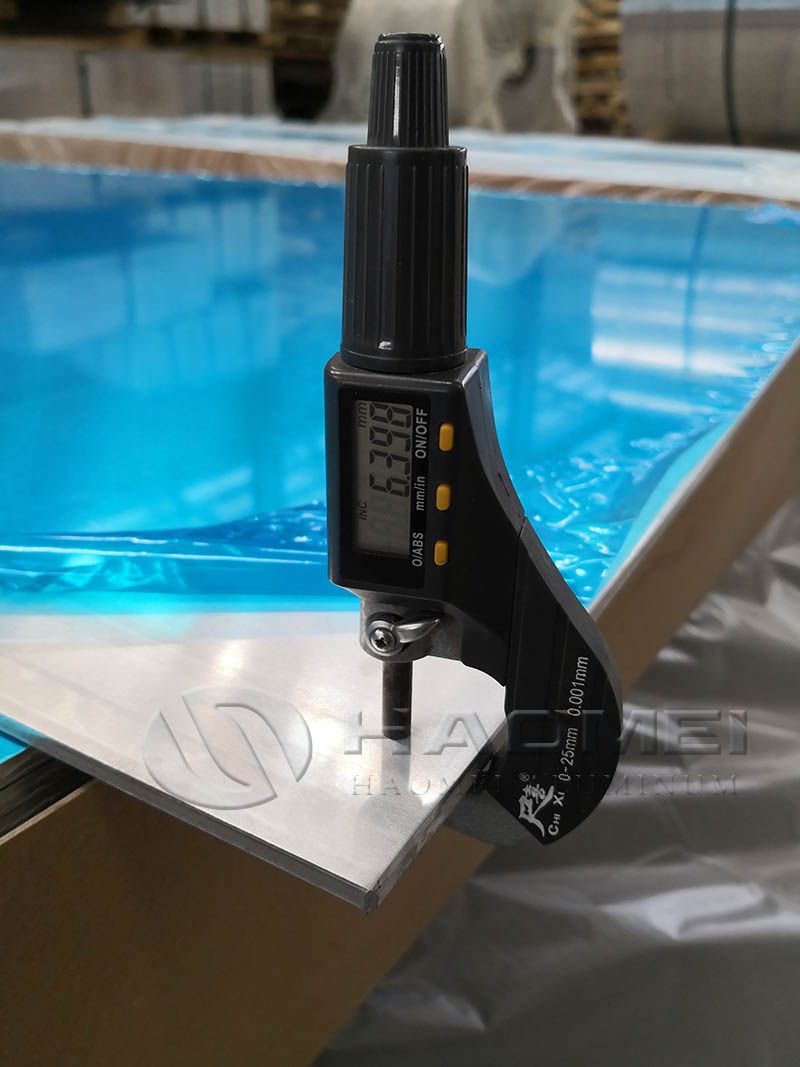In today's aerospace industry, which is moving towards "lighter, stronger, and more economical" designs, aluminum alloys, as core structural materials, continue to hold an unshakeable position. Data shows that aluminum accounts for over 70% of the materials used in commercial aircraft, and driven by the rise of both new energy aviation and commercial aerospace, the aerospace aluminum market is entering a new growth cycle.

6061 Aluminum Alloy
From a core performance perspective, 6061 aluminum alloy, under T6 heat treatment (175-185℃, holding for 8-12 hours), achieves a tensile strength of 290-310 MPa, a yield strength of 240-276 MPa, and an elongation ≥8%. This strength level is sufficient to support critical load-bearing structures such as aircraft wing spars and fuselage frames. If you are looking for 6061 aluminium suppliers, welcome to contact us.
Its strengthening mechanism originates from the solid solution and age-induced precipitation of the Mg₂Si phase. By precisely controlling the Mg/Si ratio within the optimal range of 1.0-1.3, maximum strength is ensured while avoiding the reduction of corrosion resistance due to excess magnesium.
It's worth noting that its specific strength (σ/ρ=110MPa/(g/cm³)) is twice that of steel, resulting in a 30%-50% weight reduction and directly improving aircraft fuel efficiency. This is the core reason why Boeing 787 wing spars chose 6061-T6 extruded profiles.
Ease of machining is another major advantage of 6061. Its cutting speed can reach 300-500m/min, and its CNC machining efficiency is 40% higher than that of commonly used 6063 aluminum alloy. Surface roughness can be controlled to Ra≤0.4μm, making it ideal for manufacturing precision aerospace parts.
Furthermore, its weldability is excellent. When welded with 5356 or 4043 welding wire, the joint strength can reach more than 80% of the base material, with no tendency for hot cracking. This makes it widely used in aircraft skin, landing gear struts, and other components requiring splicing. In addition, its copper content of ≤0.4% provides superior corrosion resistance in humid and marine environments, further expanding its application scenarios.
2024 aluminum sheet
Unlike the "all-rounder" positioning of 6061 aluminum alloy, aluminium 2024 is a typical "high-strength specialized" material. As a representative of the aluminum-copper-magnesium alloy system, it uses copper as the main alloying element (approximately 3.8%-4.9%), combined with the synergistic effect of magnesium, making it the preferred material for high-load-bearing components in the aerospace field.
In terms of strength, 2024 aluminum alloy is particularly outstanding. After T3 heat treatment (solution treatment followed by cold work hardening and natural aging at room temperature), its tensile strength can reach 483 MPa, and its yield strength is as high as 345 MPa, far exceeding that of 6061 aluminum alloy. This high-strength characteristic makes it an ideal material for critical load-bearing components such as aircraft landing gear, wing spars, and engine nacelle supports.
In the field of military aircraft, the application of 2024 aluminum alloy is even more extensive. For example, the fuselage load-bearing frame of fighter jets and missile hulls rely on its excellent impact resistance and load-bearing capacity.
Of course, 2024 aluminum alloy also has clearly defined application boundaries. Due to its higher copper content, its corrosion resistance is relatively weaker than that of 6061, especially prone to intergranular corrosion in marine atmospheric environments. Therefore, it usually requires surface protection treatments such as anodizing and painting when used.
Furthermore, its weldability is inferior to that of 6061. Strict control of process parameters is necessary during welding to prevent cracking. This makes it more suitable for structural components with stringent strength requirements, rather than parts requiring complex splicing.
Original Source:https://www.aircraftaluminium.com/a/which-aluminum-alloys-are-favored-by-aerospace-aluminium-market.html

没有评论:
发表评论